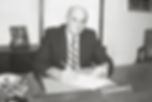117 West Church Street - Russell Building
- TJ Blakeman
- Dec 23, 2017
- 5 min read

117 West Church Street - Russell Building (Rialto Theater)
Constructed: 1905
Renovation: 1915 (re-purposed to Theatre Belvoir)
Renovation: 1938 (extensive renovation and restructuring of the theater. Renamed Rialto)
Original Owner:Charlie and Elizabeth Russell Current Owner: Bill Capel & Ernie Martin
The original site of the Russell Building sat the Champaign Sanitarium at 109 West Church Street. Immediately to the west of the building was the home and offices of Dr. Harwell Howard.

In 1905 Charlie and Elizabeth Russell constructed a commercial building at the location.

In 1915, the building was extensively re-purposed as the Theatre Belvoir and managed by C.F. Hamilton. He had been the operator of the the Walker Opera House which was torn down to make way for the Hamilton Hotel. The theater was originally a road house; seating somewhere between 850 and 900 with two balconies and a main floor.

The theater saw stage greats Al Jolson, Katherine Cornell, Cornelia Otis Skinner among others perform live. Note how the theater sits within the building. The entrance off of Church Street heads south and then turns into the auditorium space. Having the theater at the back of the building disguises it by allowing commercial spaces to operate along the Church Street facade.

In 1917 Charles C. Pyle in partnership with Richard Porter took over the operation of the theater and the name was changed to the Rialto Theater. The Rialto Theater switched from live theater to movies around 1920.
An entire post could be dedicated to Charles C. (C.C.)Pyle or as some called him "Cash and Carry" Pyle. Pyle would not only manage the Riatlo and Virginia but would eventually befriend Illinois football legend Red Grange and become his agent. Over time the two would remake professional football and many credit the duo with saving the fledgling National Football League with Red's star power and CC's marketing abilities.

By 1921 Pyle had partnered with A.W. Stoolman and Harry McNevin to build the Virginia Theatre at Park and Randolph. The Virginia and Rialto were operated jointly by Pyle and Stoolman until financial difficulties in 1923 when Stoolman filed a lawsuit against Pyle. Pyle lost control of the Rialto and Virginia in 1924 when Stoolman prevailed in the courts.

In 1925, Stoolman decided against renewing his lease for the Rialto space at which time Elizabeth Russell recruited her son Gene to take over the Rialto's operations. In 1927, Gene Russell installed Movietone and Vitaphone sound equipment and the Rialto introduced Champaign-Urbana to "talkie" motion pictures with the debut of the "Jazz Singer".

Seen in this 1931 photo of a bustling Church Street you can see the attraction of the street with Robeson's Department Store, the Park Theater and the Rialto.

In this close up, you can see the beautiful Rialto Marquee. Also note this close up of the vertically illuminated portion of the marquee.

A February 5, 1936 image shows the Rialto marquee just prior to the major 1938 renovation.

Gene Russell closed the theater in June of 1938 for extensive renovation. Architect George Ramey (architect of the Champaign City Building) designed the new interior in collaboration with Floyd R. Watson, professor of experimental physics along with air conditioning experts from Chicago. The interior was stripped to bare walls and an entirely new balcony was constructed. Internal bracing was used throughout eliminating sight obstructing support columns. The renovation included a new modern steel and glass marquee and air conditioning. The theater was styled in the popular art deco style.

Champaign Builders Supply provided the concrete and had to hand cart the material into theater. Notice the close up detail of the original marquee. This is likely one of the last photographs of that marquee before it was replaced.

The new interior removed the three balconies and replaced them with one steel supported balcony. These seating plans provide a look at the size and scale of the theater space. The new balcony seated 279 patrons while the floor made room for 544 for a total seating capacity of 820.

The new lobby, seen here on opening night, featured a sleek modern art deco design.

Along with a full renovation of the theaters interior, the building was given a new modern neon marquee.

The re-designed Rialto Theater reopened with Bing Crosby in "Sing You Sinners" on October 1, 1938



This rare color photo of the new marquee in 1939 featuring James Cagney and Pricilla Lane in "The Roaring Twenties".

And another view of the crowds gathered in 1939 for Dodge City in Technicolor.

The new Rialto also featured three new projectors in a brand new, and modern projection loft.

A Wurlitzer Organ was also installed to the left of the stage under large floral pattered acoustical panels that covered the speakers. These panels still exist.

A 1956 fire in 115 West Church Street claimed the upper floor of that building but failed to damage the theater. The second floor of 115 West Church was removed and the ground floor refurbished. The fire attracted a large number of spectators.

The Russell Building can be seen here against the backdrop of smoke from the fire and the blazing Robeson projecting sign.

The theater remained virtually unchanged through the years. This photos from 1971 shows the marquee still shining brightly.

However, the movie industry was changing. Competition from theaters in and near shopping centers began effecting the aging Downtown theaters. By 1971, the Art had begun showing "art" films which was code for "Adult" films. Across from Walter Matthau in "Plaza Suite" was "Kama Sutra" and "Book of Love"

While the theater occupied a majority of the building, the placement of theater in the back provided leasing opportunities on the ground floor as well as large ball rooms on the second and third floors. Below is a view of those tenant spaces from 1971.

Those upper floors of the Russell building had various tenants including Knights of Pythias, a finance company, art studio and an apartment utilized by the Russell family. Robeson’s leased most of the upper floors of the building starting in 1970.

Gene Russell operated the theatre until his death in 1956 at which time his son, John took over and ran the theatre until December 1978. He leased the theatre to Kerasotes from December 1, 1978 until December 1, 1981 at which time the final movie was played.

After Kerasotes left, the theater was the Gospel Lighthouse The placement of a church directly across the street from an adult theater created an interesting juxtaposition on Church Street.

The Russell family eventually sold the building to Robeson’s in 1986.

Robeson's Department store would expand into not only the Russell Building but continued further east along Church Street. The marquee was also removed and scrapped.

When Robeson's Department store closed in 1993, the building was sold to Bill Capel and Ernie Martin who own the building today. The two have managed to preserve many of the elements including the main theater space which now serves as a photos study for Mr. Capel. The image below shows the 2008 restoration of the original brick and the removal of white paint that was added in the 1938 renovation and brown paint that was added in the 60s. The process brought back much of the limestone details.


Also preserved are the letters from the original marquee.

The theater space is in remarkable shape. Many of the elements from the 1938 renovation are still in place including art deco hand railings, the pattered speaker panels, and wall sconces.

The view from the stage reviews just how large the theater is today.


Many don't realize that behind the somewhat nondescript facade sits the second largest theater in Champaign. The art deco details are maintained in perfect order, waiting for the right idea to bring the space back to life. As a quick side note, the 2010 movie Leading Ladies was filed almost entirely in the Rialto. The movie trailer is included below so that you can get a quick glimpse inside this beautiful and historic theater.
Photos Credits: Champaign County Historical Archives at the Urbana Free Library, Champaign County History Museum, Mike Moran, T.J. Blakeman, Oregon Historical Society and Champaign Fire Department